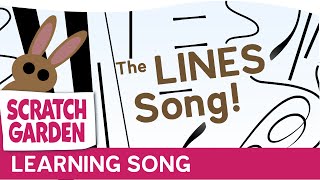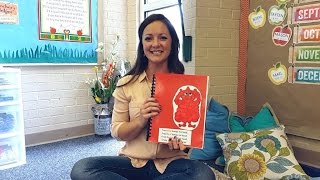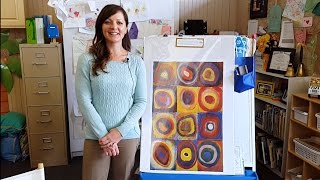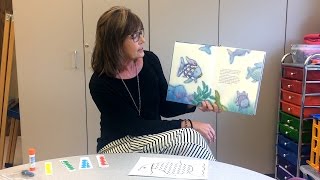Ideas for Teaching About Different Types of Lines
Neva Thiessen | Early Childhood Educator | Wichita, Kansas
This lesson includes several ways that young students can be taught about types of lines: straight, curvy, zig-zag, etc. Ideas include drawing lines in the air with their finger, using a pipe cleaner or other bendable object, drawing lines, and finding lines on objects around them.
Read Transcript
Today, I’m going to talk about one of the thing, one of the things that I teach to young children about the elements of art. And this particular one are lines, and we just talk about different kinds of lines. Like we talk about straight lines. We talk about, this would be a thick line. This would be a thin line. Then I do, I make lines in the air and I talk about a wiggly line, and I go, or a curvy line, and go let’s make a curvy line in the air. And so, we make a curvy line in the air, or we make a vertical line. Then we make a vertical line. A horizontal line. Then we make a squirrel. A spirally line, and we make zigzag lines. So, every time I introduce a term about a line, we always do it with our fingers, and then what I do is, I usually give them something to make a line with. So that if we did make a curvy line the boys and girls could have something that would bend like this and make kind of a curvy line. And then they would make could make, and this is a pipe cleaner, and they could just make a zigzag line. And then sometimes they might make a spiral line, which they just wrap around their fingers, and make a spiral line. So, I encourage the children to do anything to make lines, with anything they have. And then sometimes we will do that with crayons they’ll make curvy lines, and straight lines, and zigzag lines, horizontal, vertical. Just to get them to make the line, so they understand that they put the word with the actual example. Then we go outside, or in the classroom, and we look for lines. Like the lines of a chalkboard, or the lines on a table. We look at, we could find any lines, like the lines of a tree. So, I encourage the children not, at right after they make the lines with the objects. Then we try to find those lines. And then they can make a little book that has lines in it, with the curvy, and the straight, and the zigzag. And that’s how I teach children about the relationship with the word line and the kinds of lines with actual objects.
Help teachers and children
worldwide by sharing how
you teach.
A global movement of people sharing knowledge and learning from each other, to better educate our children and create hope for the world.
A global movement of people sharing knowledge and learning from each other, to better educate our children and create hope for the world.






